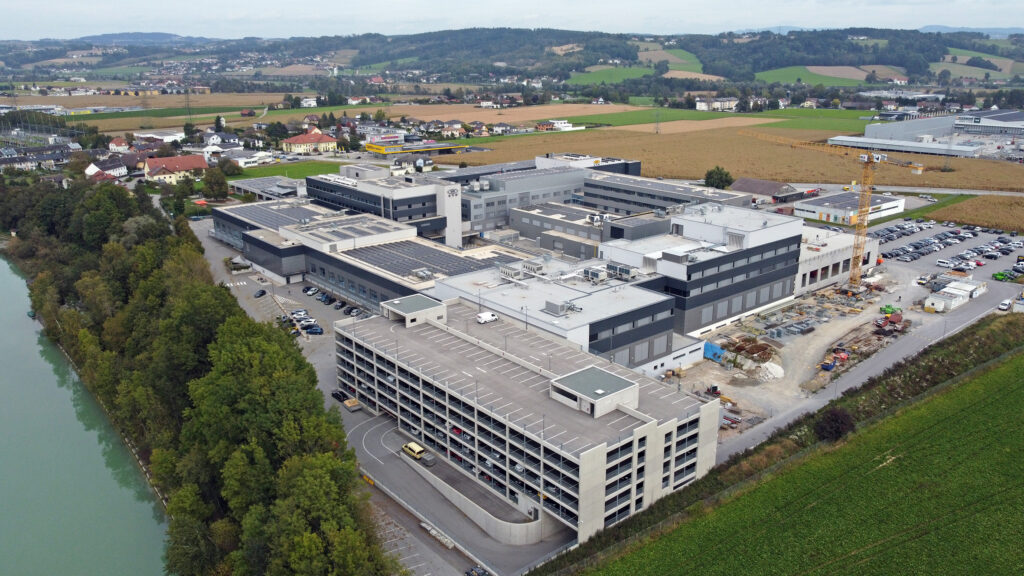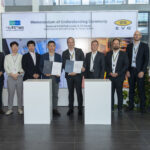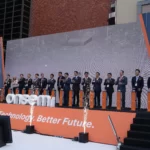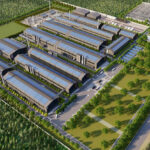ASIA ELECTRONICS INDUSTRYYOUR WINDOW TO SMART MANUFACTURING
EV Group Completes New Manufacturing Facility
EV Group (EVG) has announced the completion of the “Manufacturing V” facility, the next expansion phase of its corporate headquarters. EVG is a leading supplier of wafer bonding and lithography equipment for the MEMS, nanotechnology and semiconductor markets.
Specifically, the newly opened Manufacturing V facility serves as the manufacturing department for EVG equipment components. It provides a significant increase in production floor and warehouse space. The opening of the Manufacturing V facility is the latest in a series of expansion phases and investments driven by continued strong demand for EVG’s hybrid bonding and other process solutions and process development services. These solutions support the rapidly growing advanced packaging and 3D/heterogeneous integration market.

EVG’s state-of-the-art Manufacturing V facility adds more than 1200m2 of additional production floor space (for a total of more than 8100m2 of production area), and more than 1200m2 of warehouse space. Two new floors of office space have also been added above the manufacturing floor. In parallel, the existing Manufacturing II building was converted to offer nine new test rooms for the final assembly and test of EVG’s high-precision systems. Also, it hosts technical source inspection of the systems by EVG’s customers. This has resulted in a 30 percent increase in test room area, bringing the total test room space at EVG’s headquarters to nearly 2,800m2.
The opening of EVG’s Manufacturing V facility follows on the heels of the company’s previous expansion phase. Specifically, Manufacturing IV (completed at the end of last year) added nearly 1800m2 of production space and additional warehouse space. Since embarking on these two most recent growth phases, EVG has expanded its production capacity by more than 60 percent. Additionally, Manufacturing VI, EVG’s next phase of expansion is already under construction, with completion scheduled for the second half of 2024. Also, it will provide an additional 1,400m2 of production and an equal amount of warehouse space.

According to Dr. Werner Thallner, executive operations and financial director and member of the executive board at EV Group, “New applications fueling the semiconductor industry, such as AI, high-performance computing and autonomous driving, require massive innovations in advanced packaging. As key process enablers for 3D/heterogeneous integration, fusion and hybrid bonding have been transformed into the new scaling mechanism for semiconductor manufacturing.”
“EVG is at the forefront of developing fusion and hybrid bonding and other process solutions that our customers need to support their current and future capacity ramps as well as their long-term product roadmaps. The growth in demand for our products over the years has led us to make major investments in expanding EVG’s manufacturing and cleanroom capacity to meet our customers’ evolving needs. We fully expect this demand growth to continue in the years ahead,” according to Dr. Thallner.

EVG Heterogeneous Integration Solutions
EVG’s wafer bonding, lithography and metrology solutions enable the development and high-volume manufacturing of technology innovations in advanced packaging—including backside illuminated CMOS image sensors and other 3D-IC stacked devices—as well as in MEMS and compound semiconductors. EVG’s technology leadership in heterogeneous integration and wafer-level packaging is shown in some latest industry developments. For example, recent breakthroughs in hybrid bonding to address the needs for 3D device integration, wafer bond alignment technology to address future 3D-IC packaging requirements. Also, it includes IR laser release technology to eliminate glass substrates for advanced packaging and enable thin-layer 3D stacking, maskless exposure for fan-out wafer level packaging (FOWLP), and NIL and resist processing to support wafer-level optics (WLO) manufacturing.




